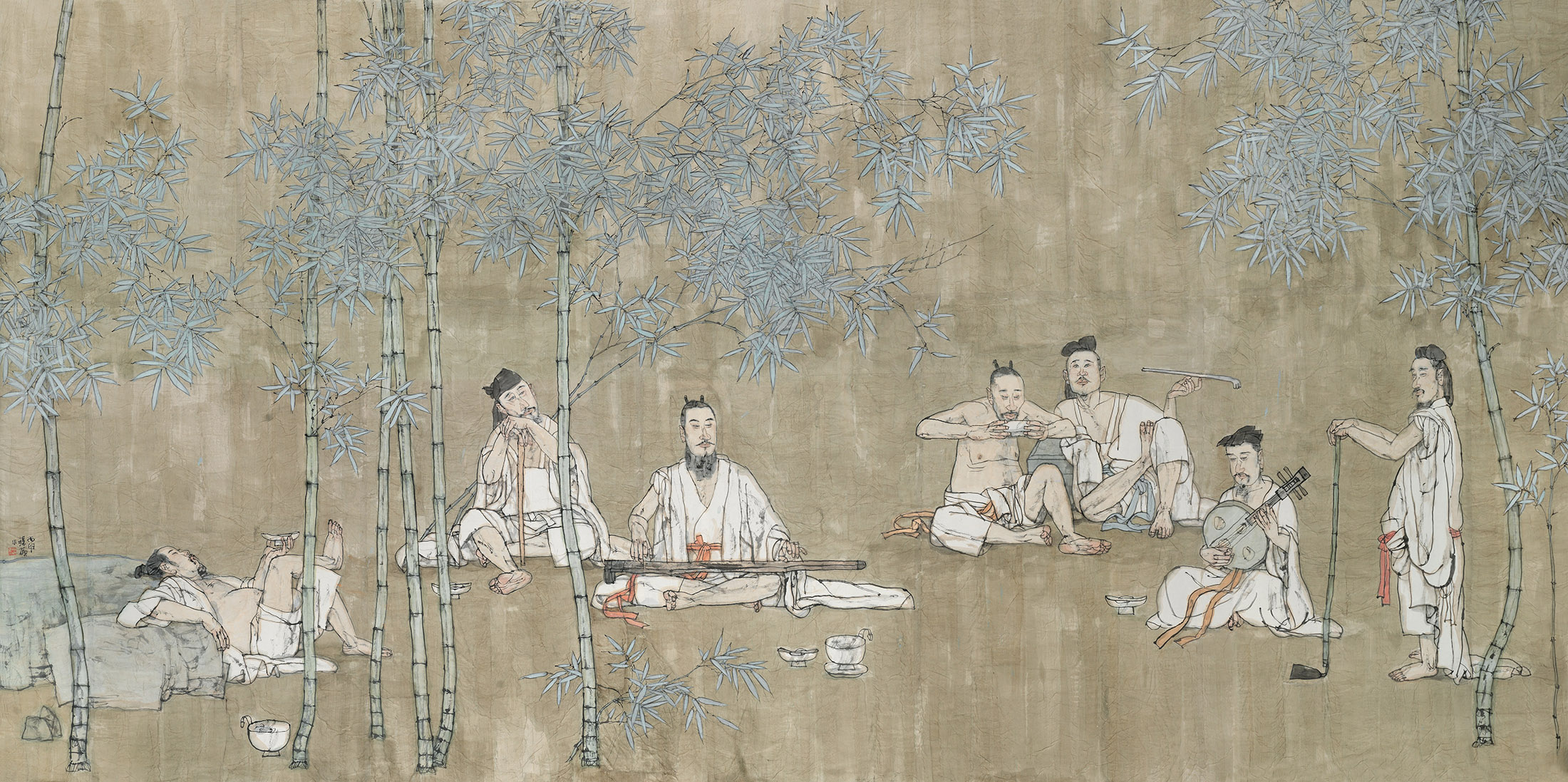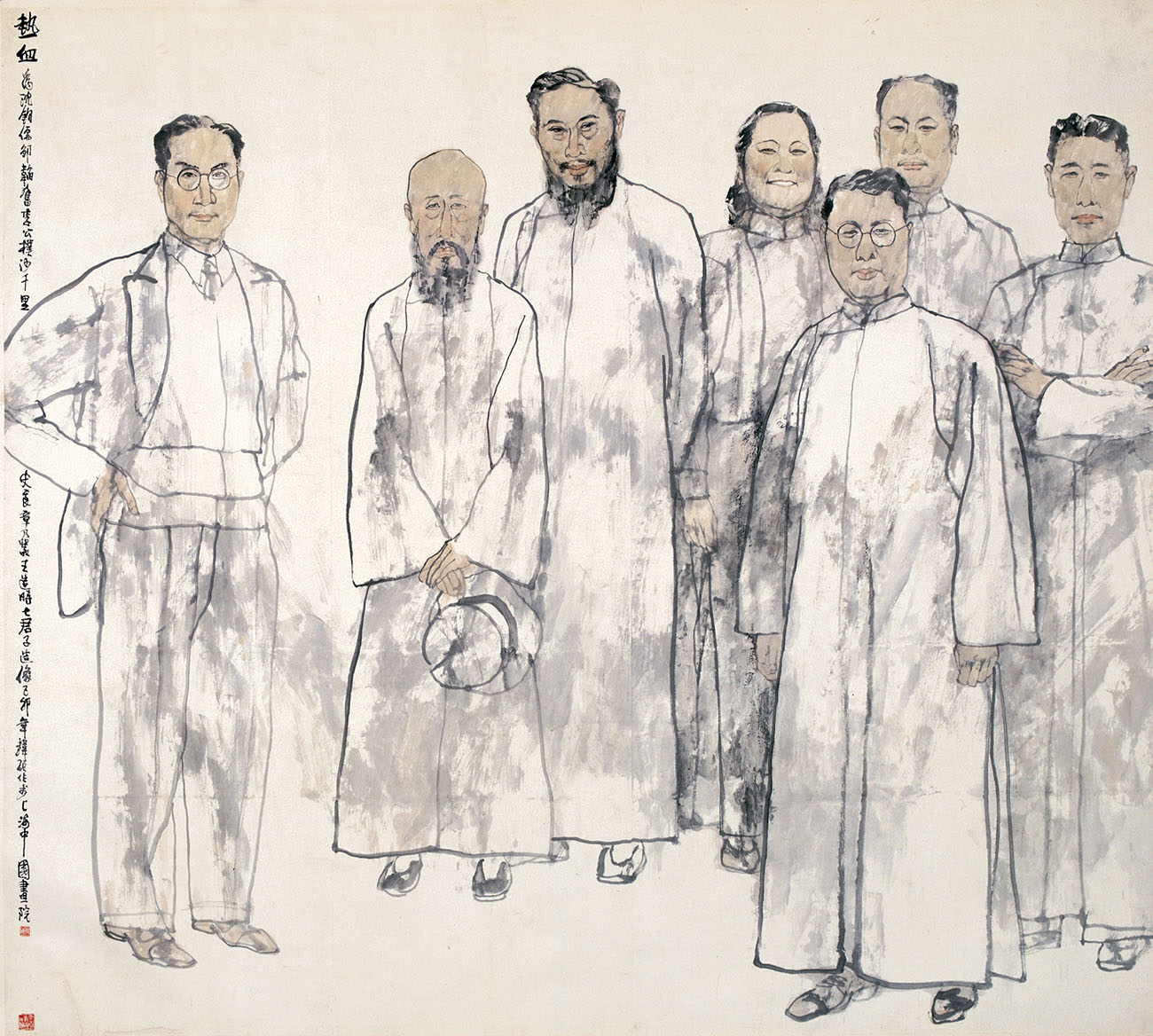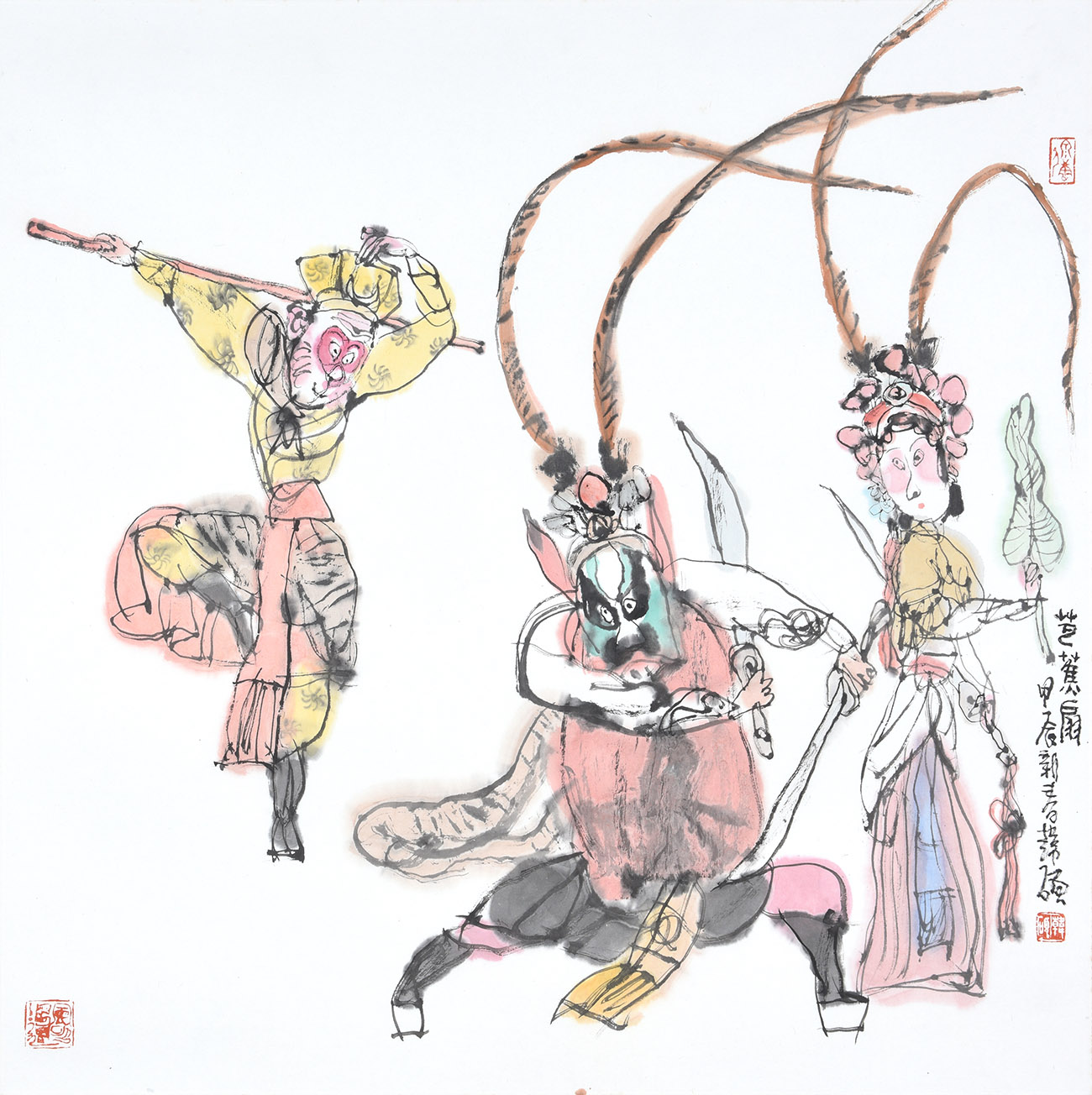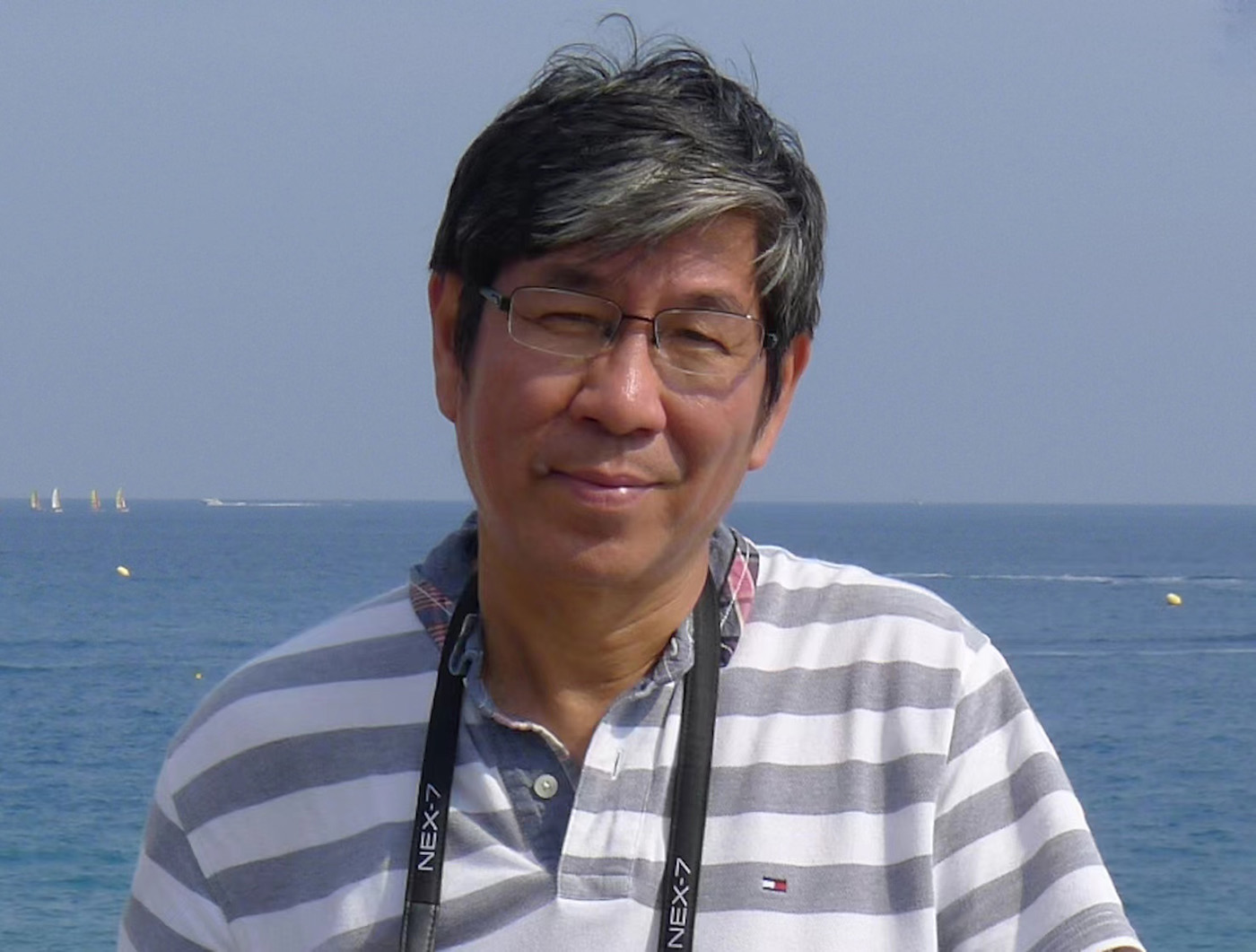Han Shuo in a solo exhibition shares more than 100 works that highlight his studies of historic figures and stage characters, Lin Qi reports.

Ink artist Han Shuo says painting demands the ability to coordinate smartly.
He says that if you compare a painting to a stage play, the painter assumes several roles, including director, performer, and designer of the stage set and lighting.
In his works, Han, who was born in 1945 and has long been committed to figure painting, presents vivid theater plays in which he arranges these characters living in the past, or from fairy tales and folklore. His paintings aim to show the weight of history and the beauty of simple but elegant brushwork.
I feel lucky that I chose painting as my profession so that I could set myself free in the world of art, enjoying its richness and broadness … For me, creation is with no end.
Han Shuo, ink artist
More than 100 ink figure paintings from Han's industrious output since the 1980s are now on display at his solo exhibition The Pursuit of Pure Perfection, which is set to run through to Sunday at the Art Museum of the Beijing Fine Art Academy. Several of the works being shown have won important accolades, including the National Exhibition of Fine Arts, the top prize in art held by the China Artists Association every five years since 1949.
READ MORE: Framing a portrait of innovation
Of the three main kinds of Chinese ink painting, figure painting took shape and matured before the other two categories — mountain and water (shanshui), the flower and bird (huaniao) — which can be traced to the Warring States Period (475-221 BC) when early examples of figure painting genre were made on silk.

Han's work shows an accumulation of his studies of these great historical figure artists whose brushwork focused greatly on attention to detail while favoring a minimalist tendency. Han has been exploring that style to convey rich meanings out of simple lines and fewer layers of color, to assume a pure, aloof perspective.
Wu Hongliang, head of the Beijing Fine Art Academy, says, "Han has been endeavoring in the depiction of figures of various social backgrounds and motifs. Whether it is the personas of luminosity in the commissions he undertakes, with a grand historical theme, or the ordinary ones earning a living, he can address the aesthetic needs of the time while integrating his personal style."
Han believes that one of the most important criteria of a good piece of work is if one can change the fixed rules — "If he shows individuality, creates a new language of art, offers a different perspective, addresses the needs of the time, or presents artistic appeal — in summary, makes something with soul.
"For example when I make a portrait of Lu Xun, a foremost writer of the 20th century, the point is to present his moral strength. But it is not as simple as to just add wrinkles to his face — that may make him look like an old man, instead of a righteous scholar," he says. "Neither would I reinforce his integrity by making him look tall and strong — it is far from the real image of him and would be improper."


Han's work shows his preference for characters in classical novels. By giving life to these characters on paper, he hopes to accentuate a "beautiful and concise" style similar to that of Tang Dynasty (618-907) poetry.
He has also painted several characters from traditional operas in which he is fascinated by the "supreme beauty of theatrical structures and the surrealistic, imaginative sides of the plots".
He views such works as an endeavor to enliven Chinese opera with the carefree and expressive strokes of the ink tradition.
Han attributes his accomplishments in ink partly to his early experiences as a creator of lianhuanhua, Chinese comic books that are often palm-sized. He says that painting in this miniature form was a unique way of training to achieve progress in technique.

He adds that even today, before he works on a painting, he likes to first make a smaller version. "It constitutes an essential part of my work. It brings me the joy of deliberating on details and gradually entering a state of perfection.
"Don't push too much. (Make sure that) every stroke is required. Every detail counts," he says.
ALSO READ: A painter whose style continues to sing
"I feel lucky that I chose painting as my profession so that I could set myself free in the world of art, enjoying its richness and broadness. Painting gives happiness and there are also regrets to make me think more. For me, creation is with no end."
Han's exhibition also inaugurates a long-term collaboration between the Beijing Fine Art Academy and the Shanghai Chinese Painting Academy — Han directs the latter's art council. The two institutes will deepen their exchanges by showing the works of each other's resident artists.
Contact the writer at linqi@chinadaily.com.cn


